The Future of Master Data Management: Top 5 Trends


Key Takeaways:
Master data management is no longer just about keeping records clean.
With supplier networks expanding and compliance risks rising, MDM is becoming a strategic priority.
Today’s platforms are faster, smarter, and increasingly AI-powered.
In this article, we explore five key trends shaping the future of MDM for supplier data across procurement and IT.
AI is transforming MDM from a manual, time-consuming task into a proactive, intelligent engine that delivers clean, complete, and continuously enriched supplier data.
Today, 33% of CIOs rank automating processes like data management as the second most valuable use of artificial intelligence and machine learning.
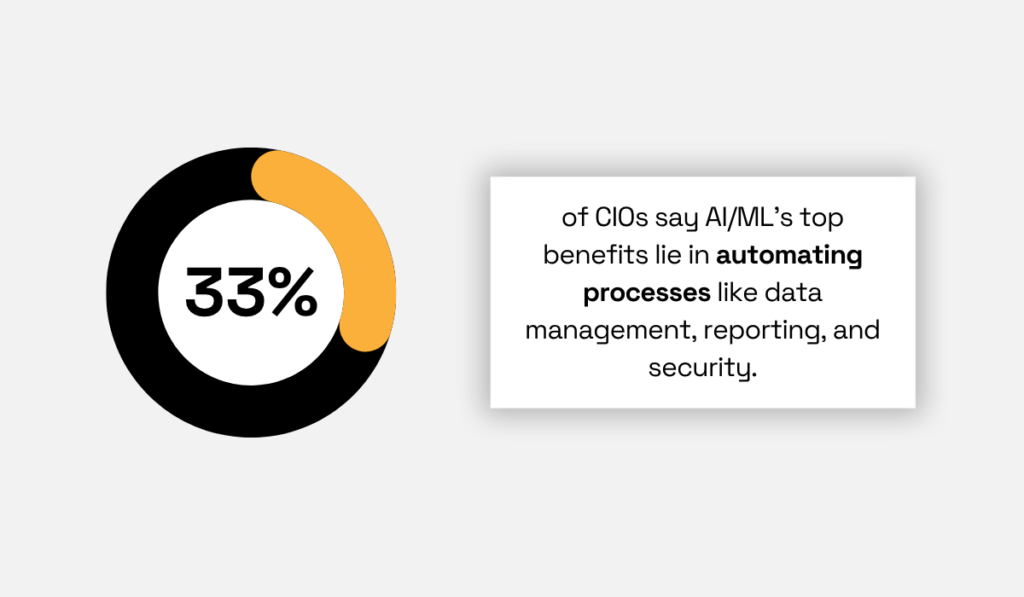
Illustration: Veridion / Data: Workday
But it’s not just IT leaders who are making the most of automation.
Procurement professionals are rapidly adopting AI, with the latest Amazon Business report showing that 45% plan to implement AI within a year, and 80% within two.
The key benefit of AI in procurement is enrichment: automatically integrating firmographics, ESG metrics, product details, and financial data to build comprehensive supplier profiles from the start.
Instead of manually filling gaps, modern MDM tools continuously update supplier profiles, simplifying data management.
This explains why 27% of CPOs identify data enrichment as a leading digitization strategy to improve procurement efficiency.
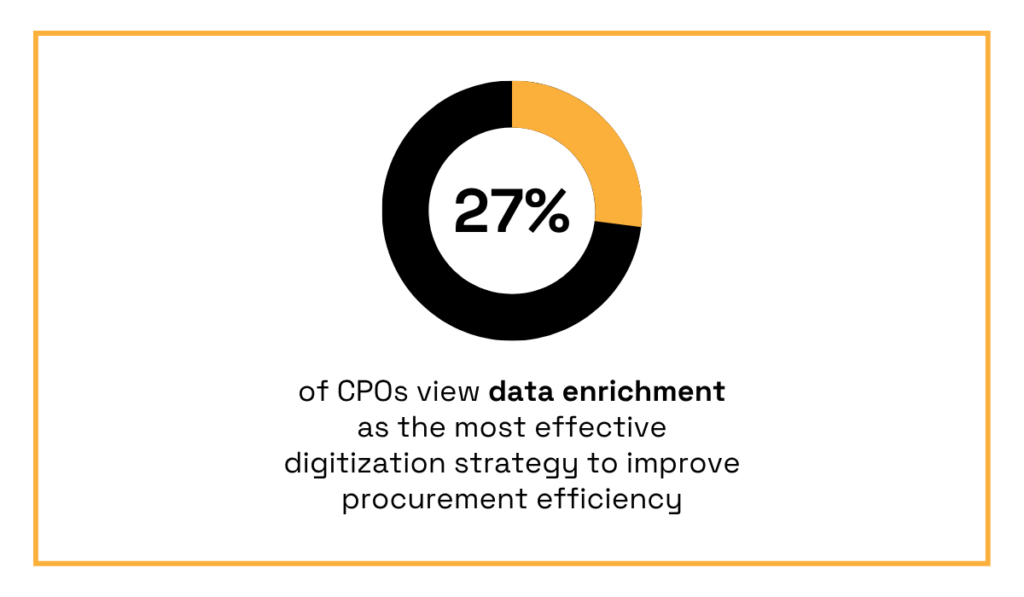
Illustration: Veridion / Data: TealBook
How does this work in practice?
Our AI-powered data service provider, Veridion, is a prime example, giving procurement teams access to a weekly updated, expansive supplier database.
With over 220 supplier attributes, Veridion enriches vendor profiles with key firmographics, financials, and ESG metrics, supporting better segmentation, risk scoring, and compliance monitoring.
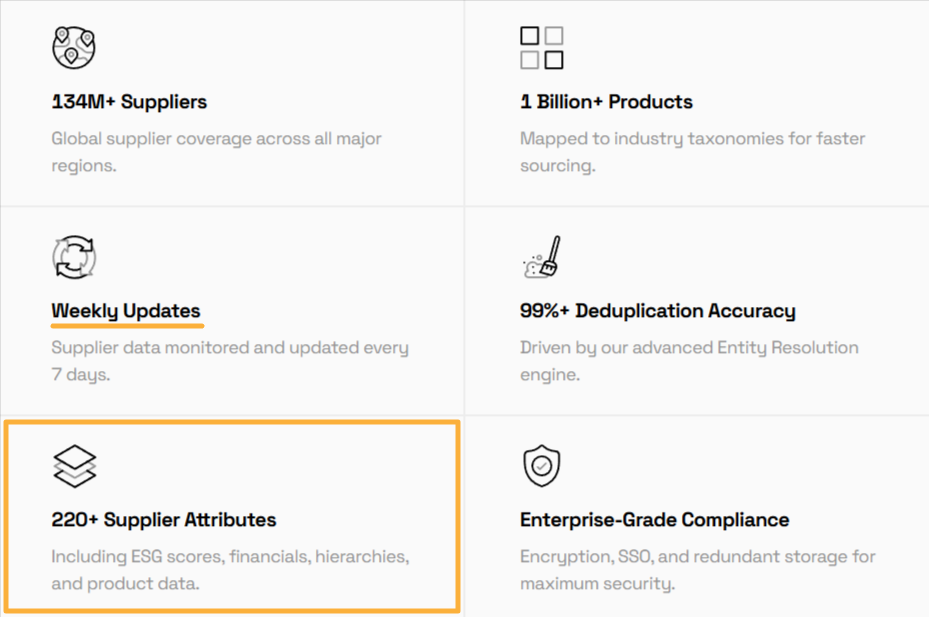
Source: Veridion
This means procurement teams receive not only clean data but contextual, actionable insights that enhance decision-making across onboarding, compliance, and risk assessment.
The video below provides a quick overview of the broader business data enrichment process:
Source: Veridion on YouTube
All in all, AI-driven data enrichment cuts hours of manual work to deliver real-time supplier data that supports smarter sourcing and vendor risk decisions.
While many organizations still rely on legacy, on-premise MDM systems, they increasingly face delays and inflexibility.
Waiting months for IT to implement or modify data tools is no longer sustainable in fast-moving procurement environments.
Cloud-native solutions solve this by offering rapid deployment, lower upfront costs, and seamless scalability.
As a result, they are driving significant growth in the MDM market.
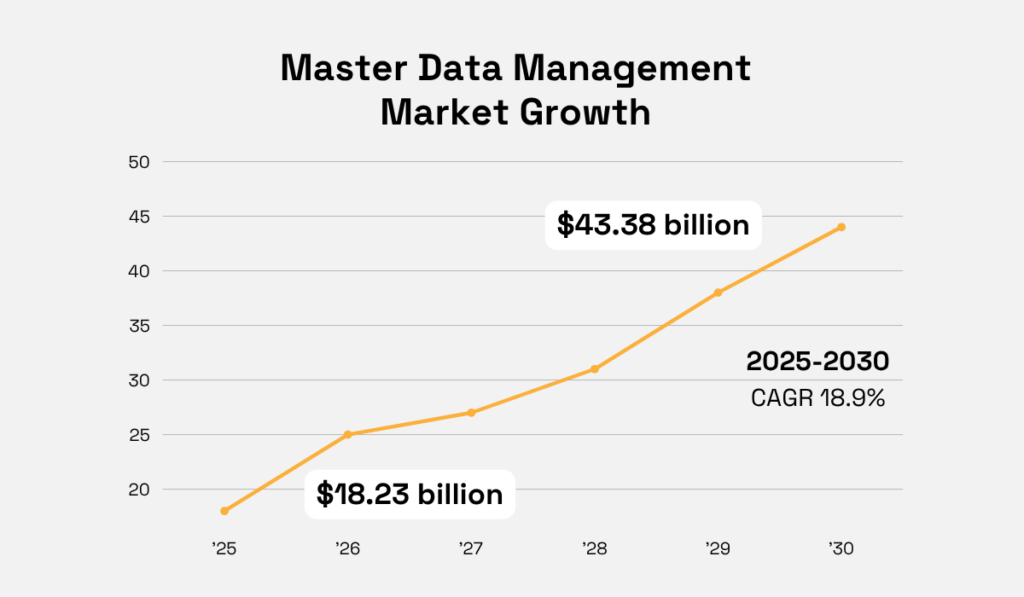
Illustration: Veridion / Data: Mordor Intelligence
Cloud-native MDM enables procurement teams to access accurate data from anywhere, thereby supporting distributed procurement operations and remote collaboration.
Forrester forecast that by 2023, nearly 60% of MDM deployments would be cloud-based.
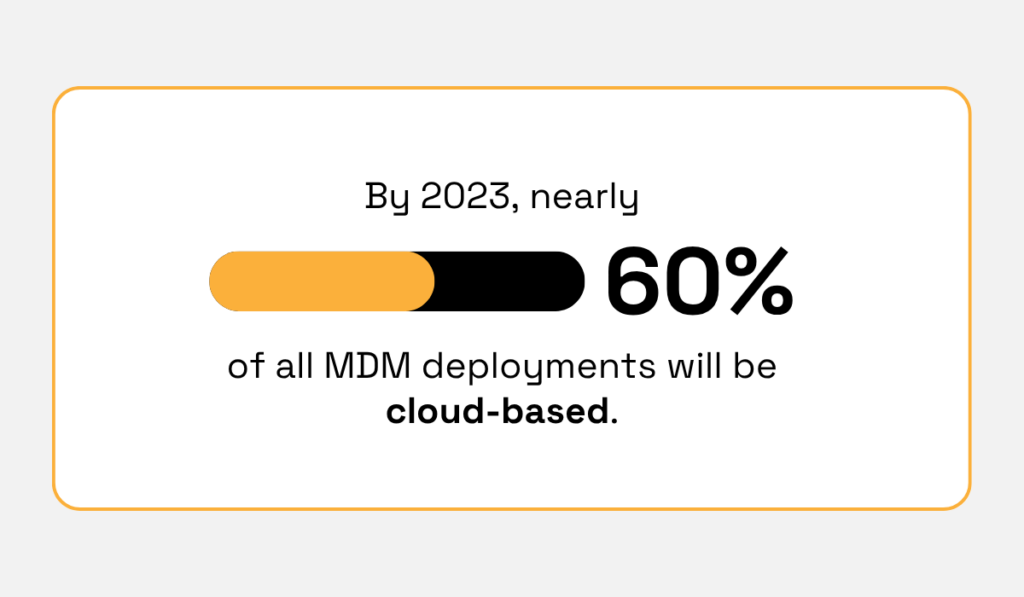
Illustration: Veridion / Data: Forrester
Gartner made an even bolder prediction in 2021, claiming that 95% of new digital workloads will be deployed on cloud-native platforms.
The appeal is clear:
This flexibility allows procurement teams to collaborate more effectively, receive continuous supplier updates, and avoid the security risks and inefficiencies common in older, siloed systems.
Profisee is a leading example of a cloud-native MDM platform.
Its FastStart methodology enables full deployment in as little as 90 days.
Once live, teams and stakeholders can easily access and manage supplier data, with no reliance on local infrastructure required.
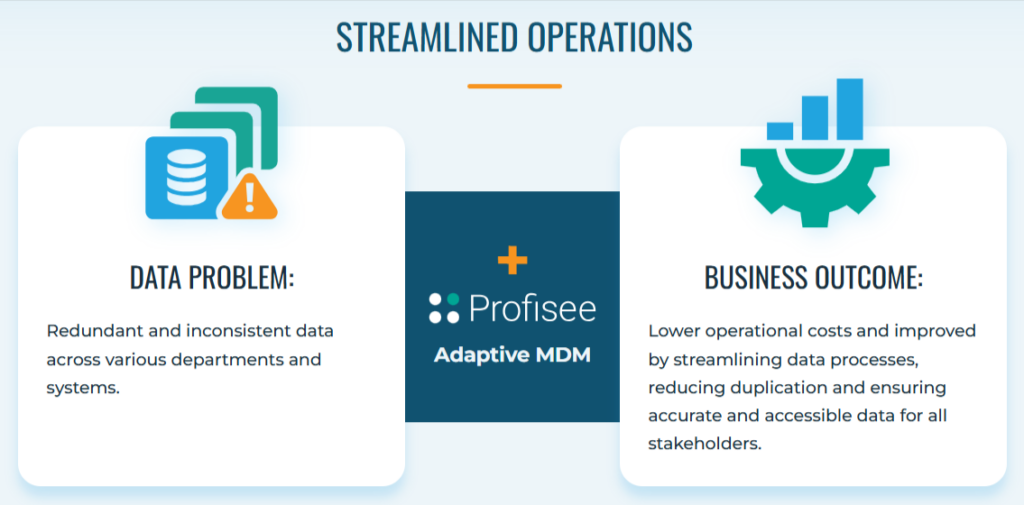
Source: Profisee
Profisee also offers deployment flexibility across Azure, AWS, Snowflake, or as a fully managed SaaS, giving organizations full control over how and where their data is hosted.
Source: Profisee on YouTube
Cloud-native MDM isn’t just a tech upgrade.
It is a strategic advantage for procurement, enabling faster, more flexible, and scalable supplier management.
Data fabric is another MDM trend aimed at resolving the fragmentation and isolation caused by legacy systems.
According to MuleSoft, an overwhelming 90% of organizations face challenges related to data silos.
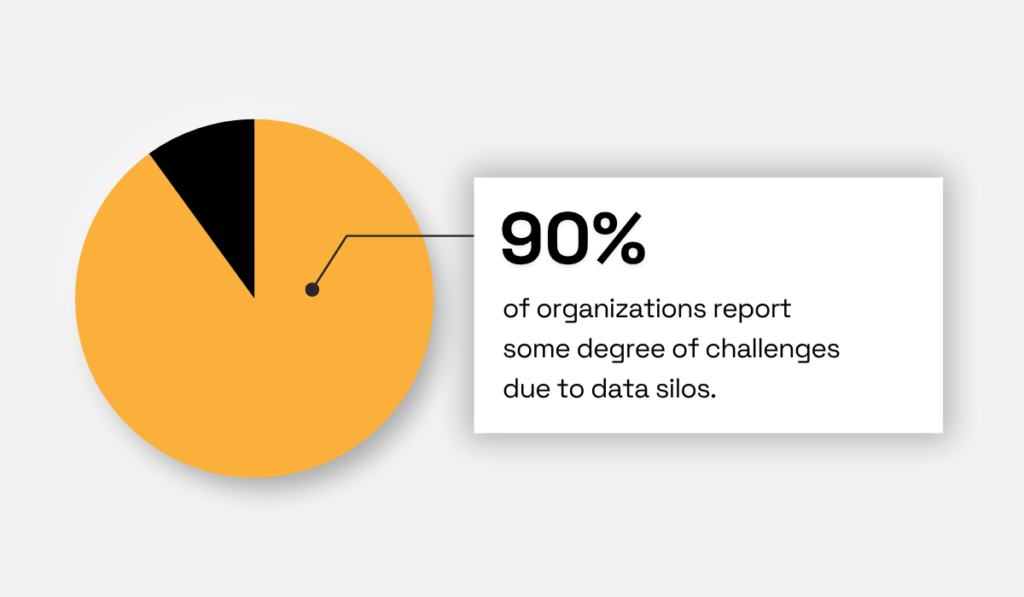
Illustration: Veridion / Data: MuleSoft
The type and the extent of issues can vary, but newer approaches like data fabrics help connect systems and sources, creating a unified layer of information that’s accessible in real-time.
It’s important to note that it’s much more than simply storing and centralizing information.
As IBM puts it, having a different, more cohesive view of data enables you to draw new conclusions and ultimately reconfigure your systems.
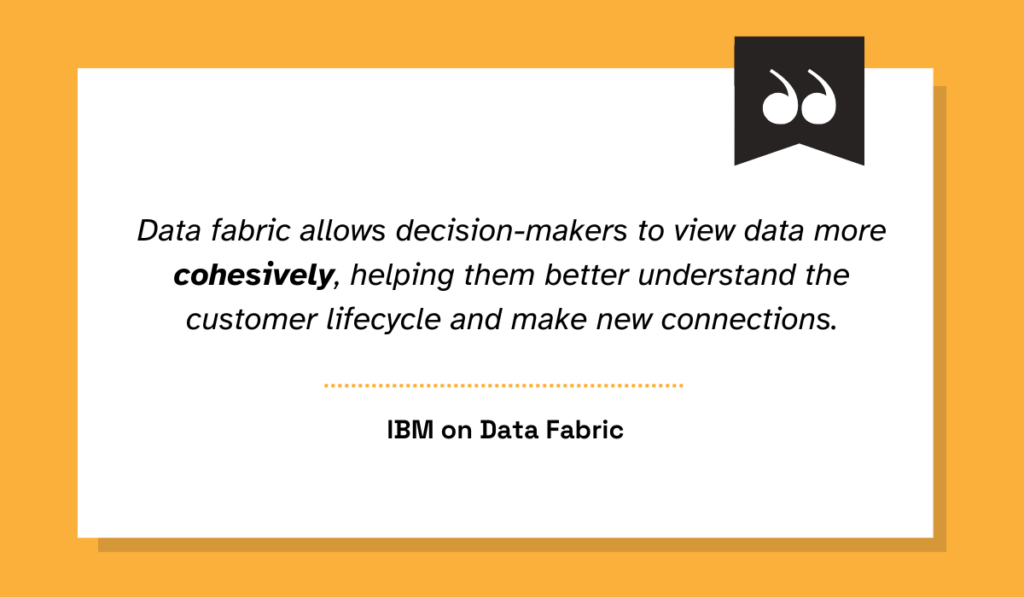
Illustration: Veridion / Quote: IBM
Now just switch “customer” to “supplier” lifecycle, and it becomes clear how versatile these systems are.
Procurement gains the ability to draw on metadata across systems—contracts, financial records, ESG disclosures, risk assessments—to surface patterns and improve decision-making.
The goal is to make data:
Here’s a side-by-side comparison showing how traditional MDM systems stack up against data fabric architecture.
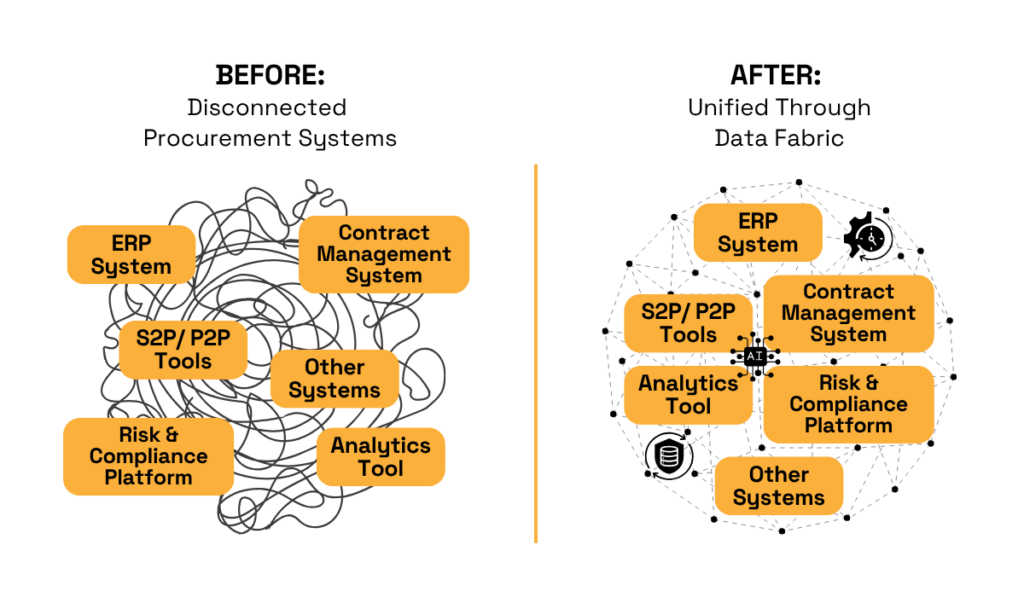
Source: Veridion
The shift toward data fabric reflects three major transformations in master data management:
And there are concrete numbers to back it all up.
Gartner’s report shows that data fabric can reduce integration design and deployment time by 30% each, and cut maintenance time by 70%.
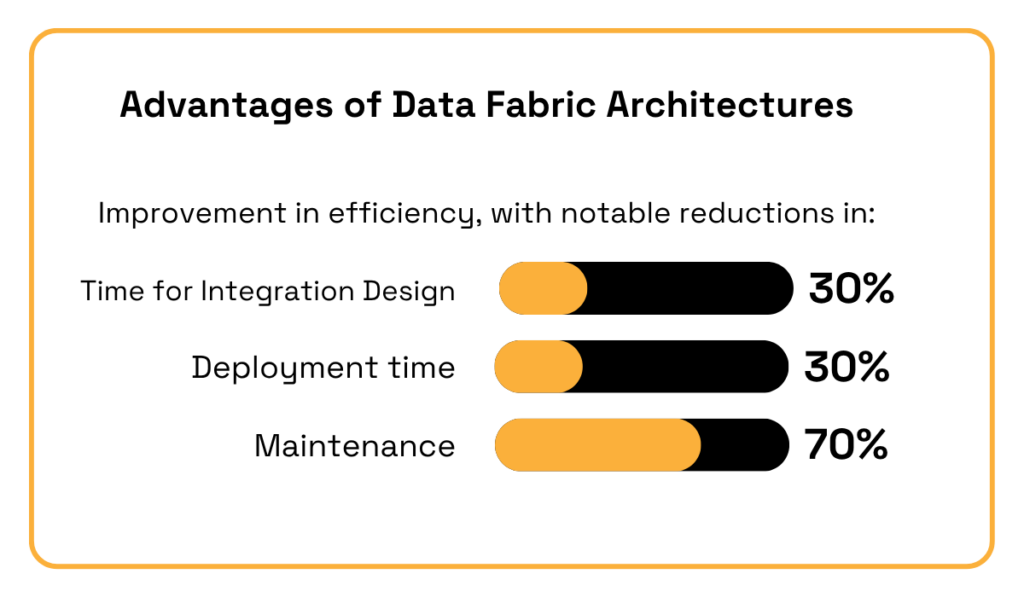
Illustration: Veridion / Data: Gartner
A data fabric gives you a foundation for scalable, cross-functional procurement insights in complex, data-rich environments.
This makes it possible to perform scalable analysis, manage global risk, and maintain compliance at speed.
Data fabric is the architecture powering the future of procurement: real-time, connected, and scalable.
As procurement teams manage increasing volumes of sensitive supplier information, including contracts, banking details, tax IDs, and ESG disclosures, data security has become a core priority in MDM strategy.
While security has always mattered, its urgency is growing.
A recent Economist Group survey ranked data security as one of the top five concerns for procurement leaders.
This shift is largely driven by the rising frequency of data breaches involving third-party suppliers.
SecurityScorecard reported that in 2022, 78% of the largest financial institutions in the EU experienced a third-party data breach, and 18% had cybersecurity ratings of C or lower.
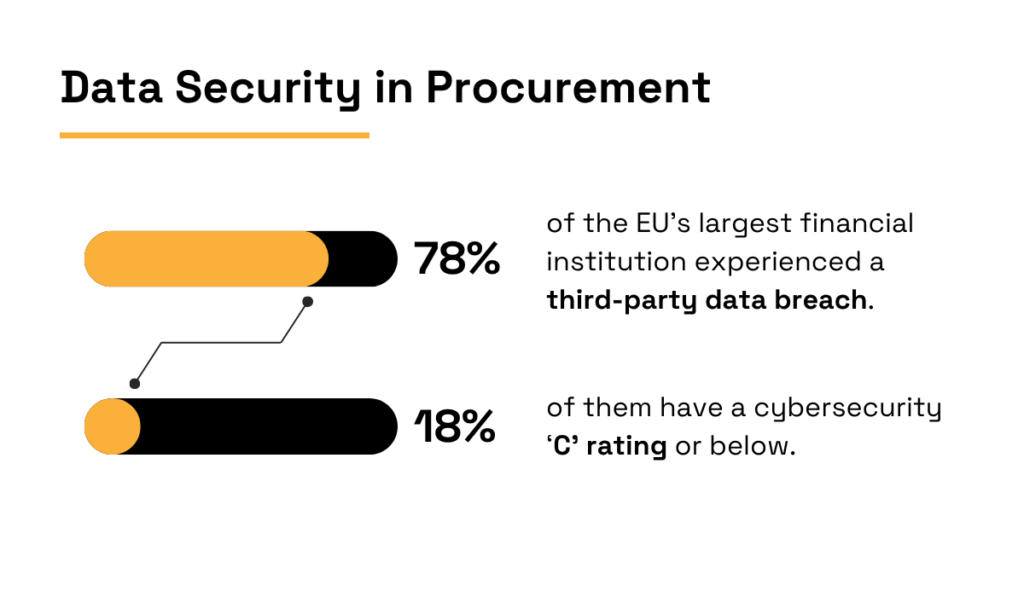
Illustration: Veridion / Data: Security Scorecard
These lower-rated organizations are four to seven times more likely to suffer a breach than those with top-tier security (A rating), according to further analysis by the same firm.
The impact is visible across industries.
Recent breaches at Ingram Micro, United Natural Foods, and McDonald’s highlight how overlooked vulnerabilities, like weak credentials or poor audit logging, can disrupt supply chains and damage trust.

Source: Forbes
The companies that were hit include an IT supplier selling cybersecurity products, the primary supplier to Whole Foods, and the biggest franchise in the world.
While the first two were victims of ransomware, McDonald’s case is somewhat different.
The attackers exploited the default administrator username and password in the company’s AI-powered hiring tool, which enabled access to sensitive applicant data.
Privacy issues are no less serious when it comes to suppliers, and according to Sinequa’s VP of Marketing, Laurent Fanichet, they continue to shed light on some hard truths.
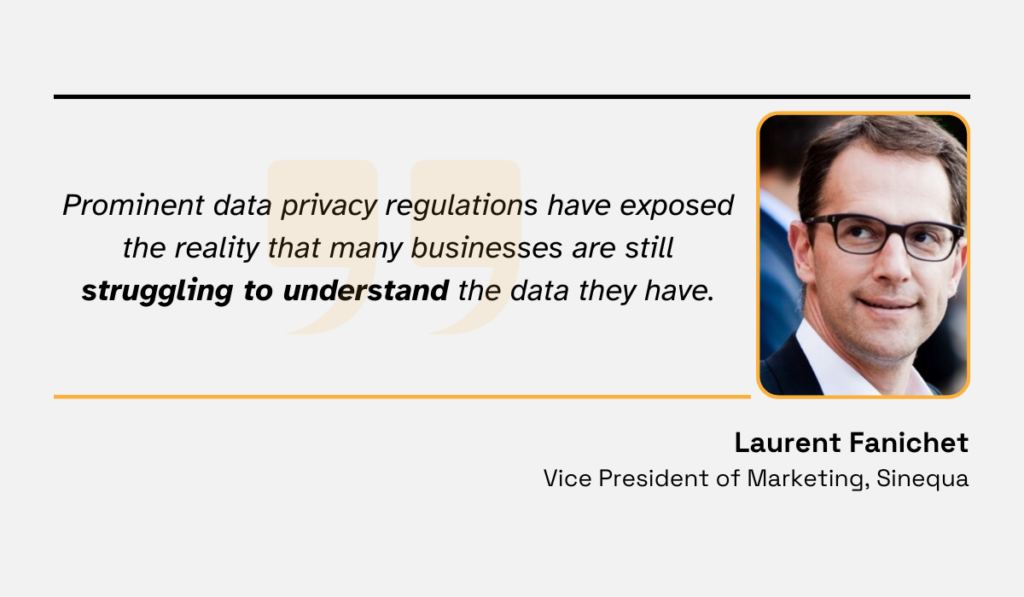
Illustration: Veridion / Quote: Computer Weekly
Fortunately, modern platforms with advanced analytics and search capabilities not only unlock insight but also support compliance by enabling secure, traceable access to supplier data.
Here are some key practices and security features gaining traction:
| Practice | Why it Matters |
|---|---|
| Role-Based Access Control (RBAC) | Ensures only authorized staff can view or edit sensitive supplier info |
| Encryption at Rest & In‑Transit | Protects sensitive bank details, contracts, tax IDs from interception |
| Audit Logs & History Tracking | Supports traceability for audits, compliance (e.g. GDPR, CCPA), and risk ops |
| Secure APIs with Token/Auth | Prevents data leaks during integration with sourcing, ERP, or risk systems |
| Tenant Isolation & Compliance Controls | Ensures secure multi-tenant environments and validates certifications (e.g., SOC 2, ISO 27001) |
Many cloud-native MDM platforms come with built-in security certifications (e.g., SOC 2, ISO 27001), as well as audit trails and encrypted APIs to enhance security.
In most cases, like with STIBO below, you can find all the necessary certifications and assurances online.
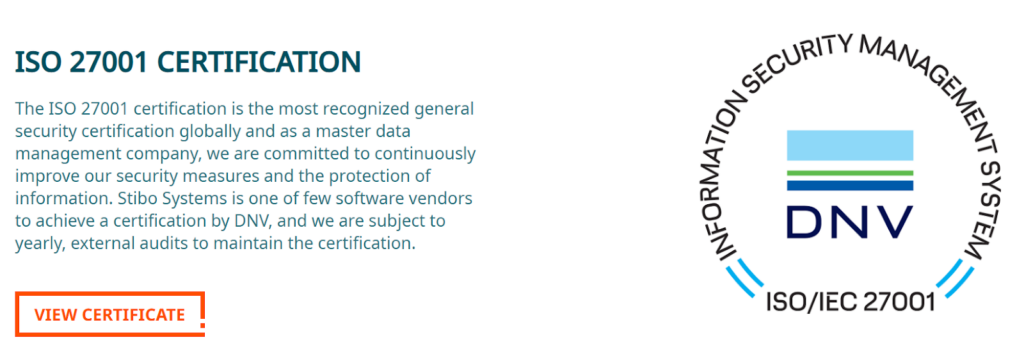
Source: STIBO System
As procurement continues to digitize and interconnect, data security becomes essential to maintaining trust, regulatory readiness, and operational continuity, making this one of the most enduring MDM trends today.
One of the most important trends in MDM is the integration of embedded analytics, bringing clean, governed data directly into the dashboards procurement teams already use.
This eliminates the need to export, transform, and manually sync data across systems.
But when it comes to analytics and data, there’s always room for improvement.
According to The Hackett Group, analytics and reporting were the number one improvement priority for CPOs in 2024.
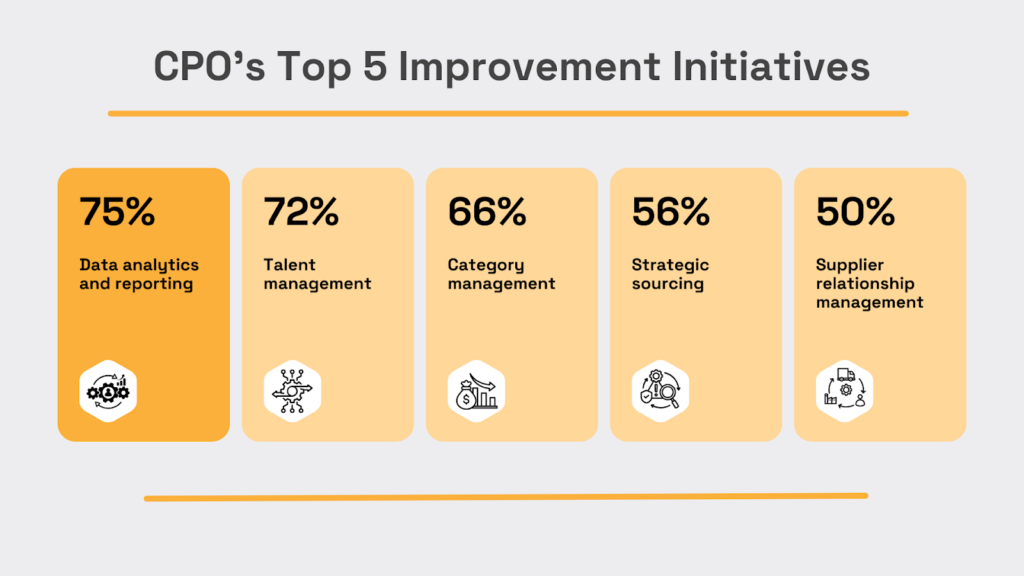
Illustration: Veridion / Data: The Hackett Group
Since the success of analytics depends on the quality of data feeding into it, adopting a master data management system is an important step toward improvement.
And the numbers confirm it.
Namely, businesses that implement MDM solutions see a 20% improvement in data quality, which in turn enhances decision-making.
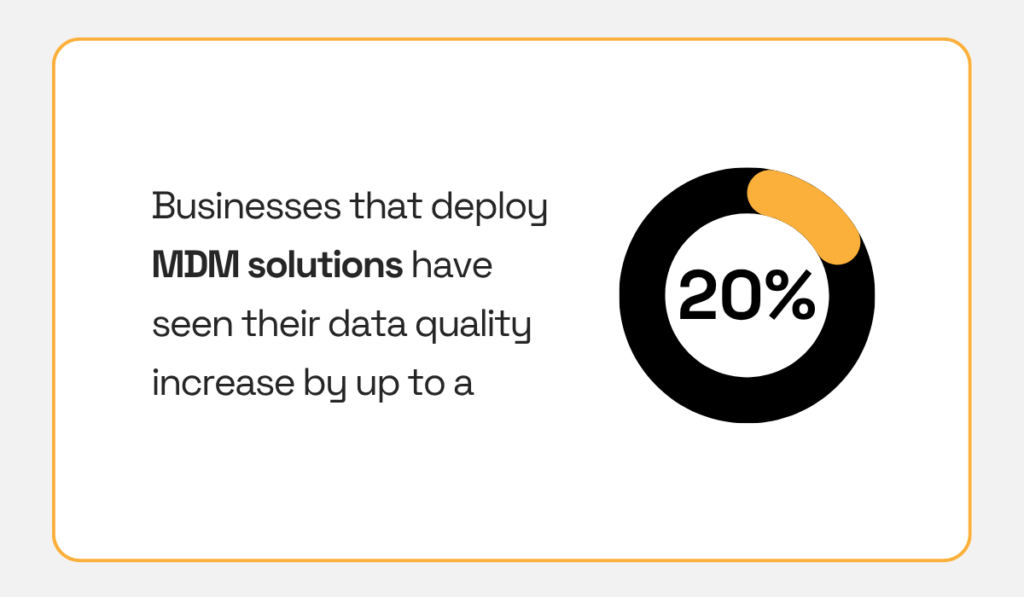
Illustration: Veridion / Data: Gartner
Despite this, many procurement teams still rely on outdated exports or siloed tools that obscure supplier risk signals and delay insight.
Embedded analytics changes this.
Instead of pulling data out of MDM platforms and pushing it into separate tools, embedded solutions like Microsoft Fabric, Snowflake, or Tableau work directly with clean, governed data from your MDM system.
That means procurement professionals can easily surface supplier risk scores, ESG insights, and real-time spend analysis right within the dashboards they already use.
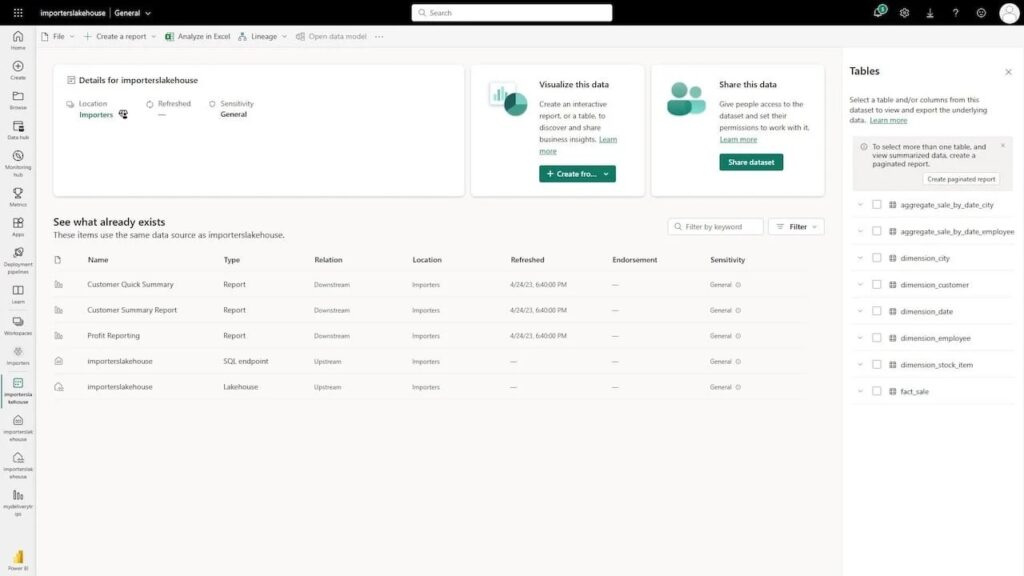
Source: Hako IT
For example, instead of waiting until Q4 to notice off-contract spending, a buyer can spot deviations mid-quarter and act.
And instead of rushing to compile ESG metrics before an audit, teams can monitor supplier performance continuously.
HICX, for example, offers supplier management platforms where embedded dashboards help visualize everything from data quality to compliance gaps, without switching systems.
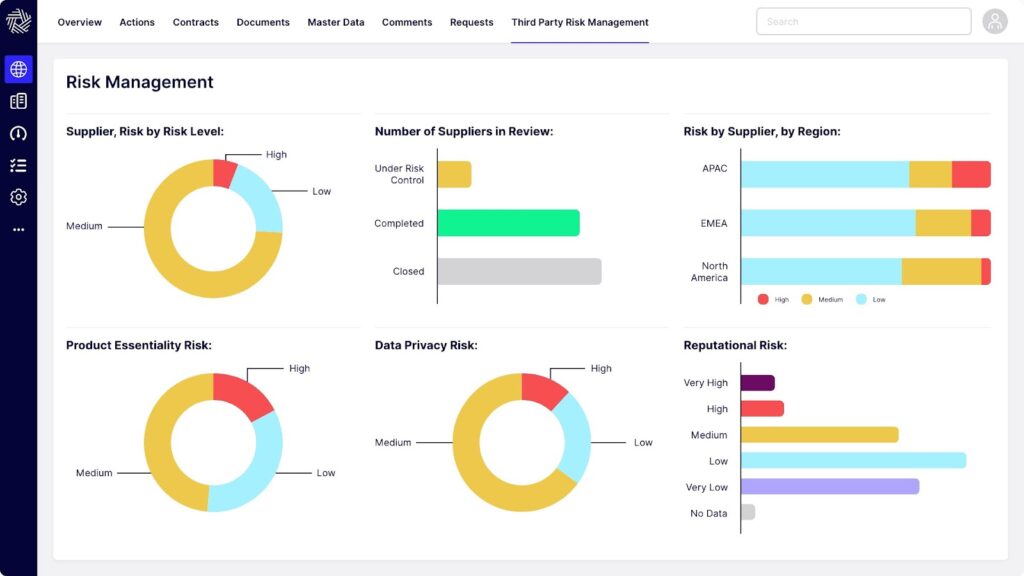
Source: HICX
By aligning your MDM system with BI tools through embedded analytics, you eliminate manual work and gain a real-time, strategic lens into supplier performance.
The result is smarter decisions, faster actions, and fewer surprises.
From AI-enriched supplier records to embedded dashboards and secure data fabrics, the future of MDM can be summed up in three words:
Visibility, agility, and trust.
Procurement leaders must view these trends not just as technology shifts, but as the foundation for smarter, data-driven decision-making.
Start adopting these practices, and you’ll lead with better data, faster decisions, and fewer blind spots.